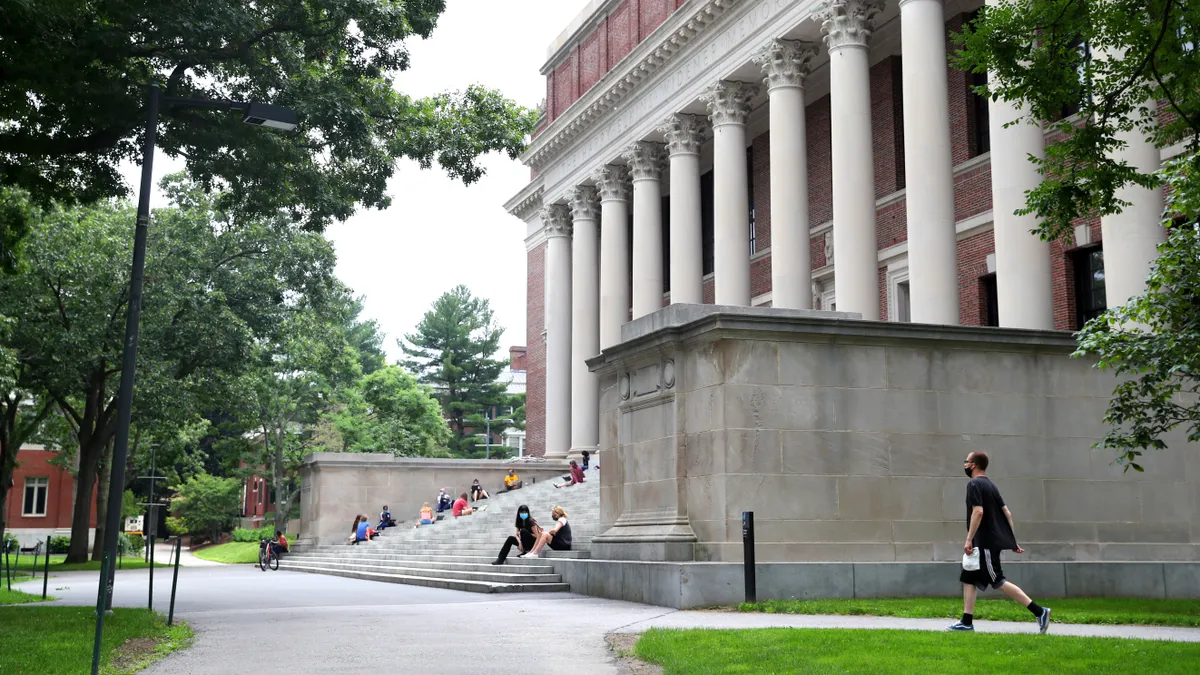Dive Brief:
- U.S. News & World Report put less emphasis on law and medical schools’ selectivity and reputations in its 2023-24 rankings released Thursday, changes that followed a contingent of colleges pulling out of the system over equity and other concerns.
- The publication reduced the weight of the reputation metric to 25% for law and medical school rankings. It determines a school’s reputation through surveys of peer institutions and professionals in the respective fields. Last year, the metric accounted for 30% of medical schools’ scores and 40% of law schools’ scores.
- For the selectivity metric, U.S. News reduced the weight of standardized test scores, dropping it from about 11% to 5% in law schools, and from 13% to 10% in research-oriented medical schools.
Dive Insight:
U.S. News rankings suffered a legitimacy crisis late last year when law, and later medical, schools began turning away from the system. Their criticism that the rankings do not reflect the schools’ educational value compounded similar past critiques.
Since then, dozens of law and medical schools have ended cooperation with U.S. News, declining to provide data or complete the reputation surveys. Several colleges have also rejected the Best Colleges undergraduate rankings, the publication’s bread-and-butter product.
Pundits theorized the exodus would not cause the rankings system to collapse entirely, but that it would pressure U.S. News to alter parts of the methodology the schools found most objectionable — namely the reputation and selectivity measures.
This appears to have come to pass. U.S. News delayed release of the law and medical school rankings a few weeks ago, citing “an unprecedented number of inquiries from schools during the graduate rankings' early release period,” it said Thursday.
The magazine based the 2023-24 law school rankings on American Bar Association data, which is publicly available. U.S. News only used peer assessment ratings when law schools also provided statistics about their institutions.
“This means the schools that declined to provide statistical information to U.S. News and its readers had their academic peer ratings programmatically discarded before any computations were made,” U.S. News said.
For the medical schools, it drew from the National Institutes of Health and the American Academy of Family Physicians. But for medical schools that did not respond to the reputation survey, U.S. News relied on data reported the previous year. If that was unavailable, the school was not ranked.
Despite the changes, many top-ranked law and medical schools from last year still were high on the list. However, some colleges that fell low in the rankings in previous years climbed the ladder. Florida International University Law School, for instance, rose nearly 40 spots to 60th place.
U.S. News emphasized student outcomes more in this year’s rankings. For the law school rankings, 33% of the calculation was institutions’ success placing students in jobs 10 months after graduation, when previously it was 14%.
It also weighted first-time passage of the bar exam more heavily — upping it from 3% of the methodology last year to 18% this year. And it added an entirely new outcome measure, ultimate bar passage rates, which accounted for 7% of the calculation.
“It is vital for law and medical students to be equipped with the skills and experiences necessary to flourish in this ever-changing and complex world,” Eric Gertler, U.S. News executive chair and CEO, said in a statement. “By focusing on metrics that measure outcomes, our rankings and resources can provide a roadmap for the first step in those students’ journeys – their education.”
Stanford and Yale law schools, both of which dropped out of the rankings, tied for the No. 1 spot. University of Chicago’s law school was third.
Yale took first place in last year’s rankings, and Stanford took second. University of Chicago kept its spot.
Medical schools have two rankings — one for research-oriented institutions, the other for primary care programs. Harvard Medical School again took the top spot for research, while the Johns Hopkins University School of Medicine, last year tied for third, moved up to No. 2.
The University of Pennsylvania's Perelman School of Medicine stepped up, climbing from a tie at No. 6 last year to No. 3.















